Kitchen garden before Ice Saints
May 2, 2006
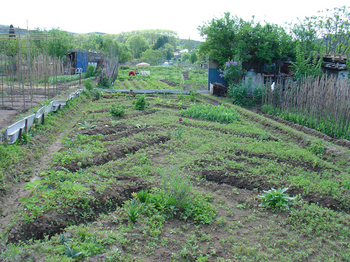
My kitchen garden on the 27th of April
Some people grow up with socialist folk songs, others grow up with Catholic weather knowledge. Until now, I’d never even heard about Ice Saints, but that was before I had a kitchen garden. Ice Saints refers to the 11th, 12th, and 13th May, the feast days of St. Mamertus, St. Pancras, and St. Gervais, purportedly the cut-off date for night frost. And the date after which you can start wearing cut-offs when you potter about with summer crops in the potager.
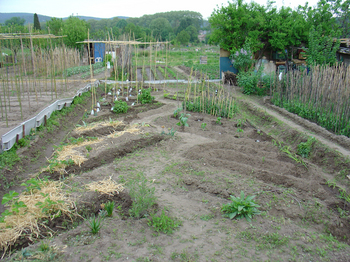
My kitchen garden on the 1st of May
Oddly, these May dates are the same from the Netherlands, way up in the Polar Circle, all the way down to Occitania. The cut-off town is Beziers, 100km from here, where its warmer and they have different days, different saints and they can grow meyer lemons outside. No cut-offs though.
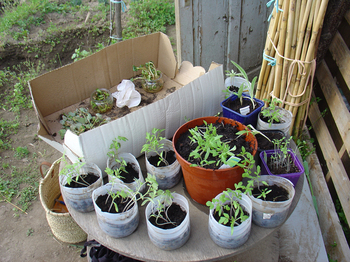
Tomato foetuses bracing themselves for a rigourous session of acclimatisation
I’m not having any of it, and even though it seems like Occitania lost a month of growing season this year due to the cooling effects of global warming, my sunflowers and lupines are growing visibly each day. But the men of the kitchen gardens are laughing at us Ladies-who-put-our-tomato-foetuses-out-early. Thursday, the gents will really split a gut watching me sow cantaloup, galia melon, cukes, luffah, gourds, pumpkins, spaghetti squash, courgette and watermelon into the bare naked ground. As a tribute to the Saints I’ll repurpose some plastic ice cream containers into little hot houses. See ya later Propagator.
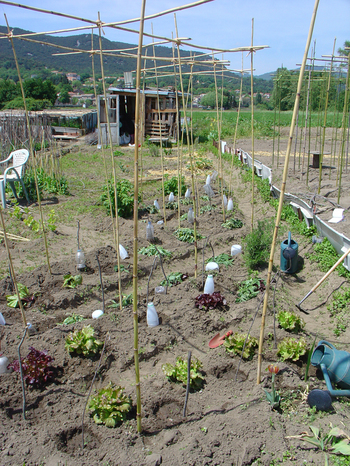
Lettuce and tomato section sorted
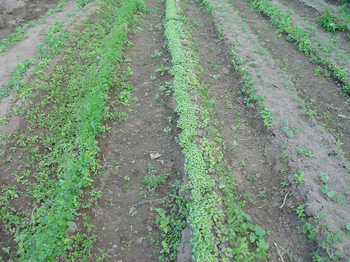
Covercrops before being plowed into seed beds
- Dutch language Wikipedia article on Ice Saints
- English language snippet about Ice Saints. Odd, no Wikipedia article. Guess it’s up to me to at least translate for the free encyclopedia!
- Wikipedia (great article!) on Ice Saints in French. Just 100 kilometres from here there are different Ice Saints because the cut-off for night frost is two weeks earlier! Consolation for the fact that the folks living below Beziers can grow lemons is that they have a drier climate and don’t have clean river water flowing into their kitchen gardens.
debra at 13:49 | | post to del.icio.us

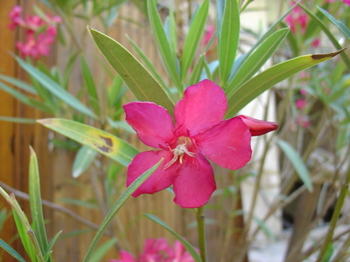
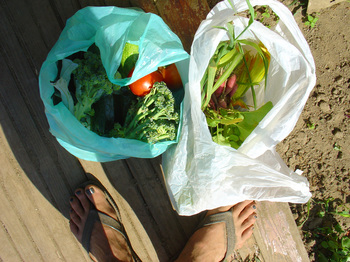
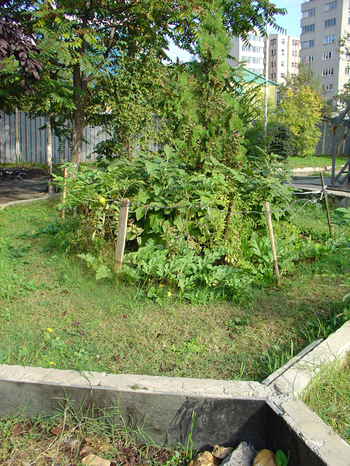
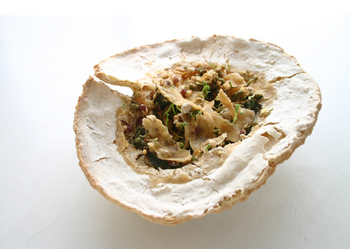

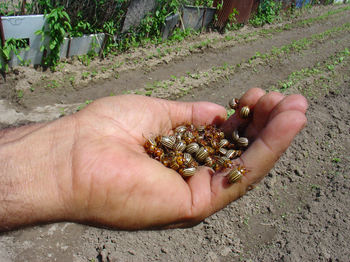
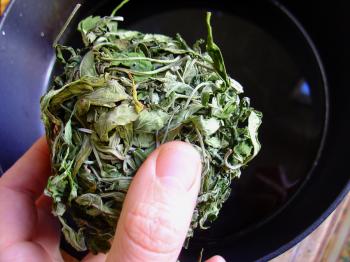
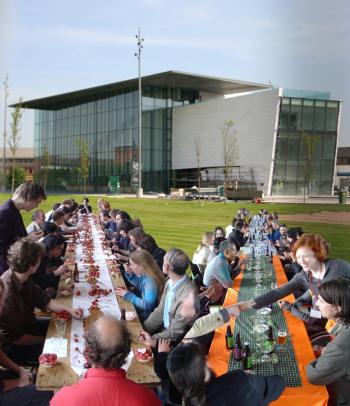







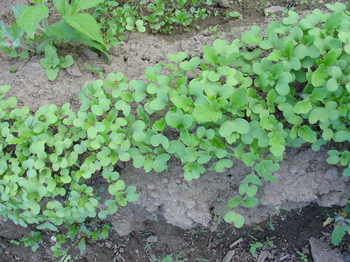



I am so jealous! That’s a wonderful garden.
We moved sort of recently and haven’t made it to the garden yet. It’s this year’s big project but it means another year or two before we start getting much from it.
Can you explain what’s going on in the top picture? Are they unedged raised beds or are those trenches? I’m still in the design phase and looking for inexpensive designs for raised bed and other aspects of the yard/garden. Luckily, this is a good time of the year to look at other people’s gardens.
Thanks
~km
Comment by kitchenmage — May 3, 2006 @ 4:23
Well, our Meyer lemon produced a fine crop this year. But spring planting in these parts have been much delayed by a cold (but no frost), wet March and April. I’m thinkin’ an end-o-mud party to propitiate the appropriate gods should be initiated to mark the end of th rainy season in these parts.
Comment by dad — May 3, 2006 @ 8:17
Kitchen Mage, those are trenches. I’m still a beginner and am trying this out. Last year I inherited the garden in July, and cultivated leafy greens and just a few other brassica type things.
I designed a deep trench system and plant in a lowered bit around the water edges. But I can do this because I have an endless supply of free water that I can divert to my garden from a river, so I’m not cautious about using water.
Also I planted this way because I’m gone half the time, and I wanted to make a watering system that would be easy for someone else to do. Dam open, let ‘er rip and come back 40 minutes later when everything is soaked.
No one else in the gardens does it this way and they think I’m a meshuggah. I’m concerned that i’m washing all the nutrients away, but haven’t see evidence of this in the soil or the plant growth yet. Also, I did the zigzag because I wanted obscured views from wherever I was working in the garden. It’s an experiment and I’m a beginner, and I wouldn’t follow my own advice.
There is a wonderful garden advice book by John Seymour titled, “Complete Book of Self Sufficiency” (first published by Dorling Kindersley in 1975) that talks about all different sorts of ‘holdings’, from allottment size to 5 acre. I’m not ‘there’ yet - with the proper mixing of plant beds, I still want a greater variety than is probably truly feasible, and I really don’t like the mini-farm look, but maybe in a few years I’ll come round. There’s a reason everyone does it ‘that way’.
Every single day I think, ‘how will I fit it all into my garden!’ and twenty minutes later, ‘this garden is way too big for me’. I’m doing my best not to be fiddly.
Comment by debra — May 3, 2006 @ 11:16
Dad, maybe you should plant watercress in the winter, or fennels and angelicas (umbels). There are varieties of giant smokey and red fennels that are very architectural, and if you’re not eating them, it won’t be too sad when they die. And Mom will dig the flowers for the ikebana thang.
Comment by Debra — May 3, 2006 @ 11:27
Dad, maybe you could plant watercress in the winter, or fennels and angelicas (umbels). There are varieties of giant smokey and red fennels that are very architectural, and if you’re not eating them, it won’t be too sad when they die. And Mom will dig the flowers for the ikebana thang.
Comment by Debra — May 3, 2006 @ 11:27
Debra.
When you let ‘er rip, does the water pond and soak in or does it run off? If the former, then the nutrients will mostly stay in the root zone…unless the ground is really permeable—it doesn’t look it. How deep does the water penetrate into the soil? If you have runoff, then you would be losing nutrients and possibly soil as well.
Comment by dad — May 4, 2006 @ 2:03
Dad,
It’s the former. In both gardens I made a trench system and plant either on the borders of the trenches (upper garden), or on raised beds/rows (lower garden). I let the river water in the trenches and it soaks the trench borders between 10-30 cm inwards. The trenches are about 20-30cm deep. I’m not very precise and suck at grading, but the garden is ‘graded’ to let the water flow.
My idea was that the earth would absorb the water aided by the roots, and the roots of the plants would search out the water. This seems to work. The nutrients are probably staying within the root zone, but… the soil is sandy and the garden is graded after a fashion at a tilt so that the nutrients COULD OSTENSIBLY wash down.
Everyone else (except Kristi) irrigates with a deep trench along the perimeter of the garden, attached to LOWERED beds. They let the water rush in OVER the plants (well mostly salads, the beans and tomatoes, they use rows like me). Everyone else has lighter soil (except Kristi) which I think indicates that they’re washing it out. The guys use fertilizers, scrape their garden clean of weeds and burn everything all the time. They’re also there all the time and have to find something to do probably.
This year I’m trying my best to use all the (young) weeds as either mulch (if pulled), or green manure (if turned under). More on this in today’s entry.
Comment by debra — May 4, 2006 @ 10:04
Hoi debra, zie hier mijn moestuin op het balkon.
http://moestuinopamsterdamsbalkon.punt.nl/
Groeten Dinie
Comment by dinie besems — May 26, 2006 @ 13:25